wikiHow is a “wiki,” similar to Wikipedia, which means that many of our articles are co-written by multiple authors. To create this article, 27 people, some anonymous, worked to edit and improve it over time.
wikiHow marks an article as reader-approved once it receives enough positive feedback. In this case, several readers have written to tell us that this article was helpful to them, earning it our reader-approved status.
This article has been viewed 233,607 times.
Learn more...
While you might not be able to completely get rid of the eye pain from swimming underwater, there are lots of tricks you can use to reduce it after you're out of the water. The redness and stinging sensation that you're probably familiar with if you've ever opened your eyes in a pool or the ocean happens because of the chemicals and other things in the water. By taking the right preventative measures and treating your eyes afterward, you'll be able to significantly reduce pain caused by opening your eyes underwater and may be able to keep them from becoming red and puffy at all!
Steps
Reducing Eye Pain Underwater
-
1Avoid chlorinated water. While you may not always be able to choose where you're going to swim, it is helpful to know which kinds of water cause the most eye pain. For example, chlorinated water (like you will usually find in pools, hot tubs, and so on) tends to hurt more than ordinary water when it gets in your eyes. While it's great for killing waterborne germs, the redness and stinging you can get after a dip in the pool can be seriously annoying.
- Chlorine hurts more because it disrupts the eye's natural tear membrane. In some cases, chlorine can also dehydrate the cornea, leading to cloudy, distorted vision for a short time.[1]
-
2Avoid salt water. Another common source of eye irritation while swimming is salt water. Salt naturally draws moisture out of the eyes, dehydrating them and causing a stinging sensation. In addition, the sorts of places where you're likely to swim in salt water (like beaches) can have additional contaminants in the water like biological matter, silt, and pollution.
- The eyes are naturally covered with a salty fluid (you are probably aware of this if you've ever tasted your own tears). However, the average salt content of the ocean is usually about three to four times more salty, leading to the imbalance that dehydrates your eyes.[2]
Advertisement -
3Remove contact lenses before swimming. Most optometrists (eye doctors) recommend against swimming with your contacts in. Depending on which type of contacts you are wearing, the water can cause the contact to deform and press against the eye, causing pain. Contacts can also trap bacteria and microorganisms from the water against the eye, which (in rare cases) can lead to infections that cause serious vision problems.[3]
- If you must wear contacts underwater, use single-use disposable contacts and discard them after you swim. This way, you won't need to carefully disinfect them.[4]
-
4Have a soothing saline solution handy. Saline solutions contain a mix of salt and water that is specially formulated to match your eyes' natural salt levels. Applying a few drops after swimming without goggles is a great way to flush contaminants out of your eyes, soothe stinging, and reduce the risk of infection. You can usually find bottles of saline solution at pharmacies and grocery stores for fairly cheap.[5]
- In a pinch, you can also splash your eyes with cool, clean fresh water like you'd get from a bottle or the tap.
-
5Squint, rather than opening your eyes completely. The less you expose your eyes to water, the less you'll irritate them. If opening your eyes all the way is too painful, you may be able to get some underwater vision by simply squinting. You won't be able to see as much, but you will still probably be able to make out vague shapes and outlines, which is better than nothing.
Practicing Your Underwater Vision
-
1Enter the water with your eyes closed. Like any difficult skill, the best way to learn how to open your eyes underwater without pain is through practice. Start by jumping into your preferred body of water. As noted above, clean fresh water is best — chlorine and salt water hurt more. Keep your eyes closed as you enter the water to prevent water from splashing into them.
- If you're wearing contacts, don't forget to take them off before you get in the water.
-
2Try squinting at first. Once you're underwater, open your eyes ever-so-slightly. Crack your eyelids open just a little bit until you can see the vague outlines of your surroundings. Maintain this for a second or two. If it's not too uncomfortable, proceed to the next step.
- If squinting is too painful, you may be swimming in eye-irritating water (or may just naturally have sensitive eyes). Try the "controlled environment" step at the end of this section.
-
3Slowly open your eyes wider. Now, gradually open your eyelids to their natural "open" position. It may be hard to get yourself to do this — it often feels "wrong," like swallowing a pill without water or looking over a high ledge if you're afraid of heights. If you're nervous, go extra-slow to keep your anxiety manageable.
- Some people find it easier to open their eyes underwater if they look upward. Try experimenting with pointing your eyes in different directions to find a position that feels best for you.
-
4Close your eyes as soon as they start to sting. If you've ever held your eyes open out of water (like for a staring contest), you probably know that they start to sting after a while even without anything irritating them besides the air. When you're underwater, your eyes will start to sting much more quickly and you'll need to hold them closed for longer than normal to get the stinging to go away. As soon as you feel the first twinges of pain, shut your eyes and hold them closed for a second or two. Your eyelids will re-coat your eyes with a protective layer of tears, reducing the pain.
- When the stinging goes away, gradually open your eyes again. Repeat this pattern as you swim underwater to keep the pain under control.
-
5If you're having trouble, test your skills in a controlled environment. Everyone's eyes are different. Some people will find it easy to open their eyes underwater, while others may struggle. If you can't seem to get your eyes open, try this gentle practice method until you're more comfortable:
- Fill a bowl or sink with clean, clear, warm (not hot) water from the tap.
- Lower your face into the water with your eyes closed. It should feel nice. If it's too hot or cold, adjust the temperature.
- With your face in the water, gradually open your eyes, squinting at first and then opening them fully. Close your eyes again as soon as they start to sting.
- Repeat a few times until you can open your eyes confidently before testing your skills in the pool, at the beach, etc.
Community Q&A
-
QuestionWill my eyes hurt a bit when I open them in the chlorinated water?
 Community AnswerFor me, it's a bit blurry at first, and I can only open them underwater for short periods of time, but I have friends who can do it! Your eyes will get used to it if you practice.
Community AnswerFor me, it's a bit blurry at first, and I can only open them underwater for short periods of time, but I have friends who can do it! Your eyes will get used to it if you practice. -
QuestionI have an extreme fear of drowning if I don't hold my nose while I swim, but I don't want to look dumb by holding it constantly. How do I improve this?
 RubyTop AnswererYou can get nose clips for swimming so that the water doesn't go up your nose. This is like holding your nose, only it looks more normal.
RubyTop AnswererYou can get nose clips for swimming so that the water doesn't go up your nose. This is like holding your nose, only it looks more normal. -
QuestionHow long do I have to practice?
 Community AnswerPractice as long as you need to. Once you are comfortable, you should be able to do it whenever. Of course, to keep the ability, you do need to do it regularly.
Community AnswerPractice as long as you need to. Once you are comfortable, you should be able to do it whenever. Of course, to keep the ability, you do need to do it regularly.
References
- ↑ http://www.tesh.com/story/health-and-well-being-category/why-swimming-pools-are-damaging-our-eyes/cc/6/id/26527
- ↑ http://news.essilorusa.com/stories/detail/heading-to-the-beach-think-twice-before-you-dive-in-without-goggles
- ↑ http://www.allaboutvision.com/contacts/faq/swim-in-cls.htm
- ↑ http://www.allaboutvision.com/contacts/faq/swim-in-cls.htm
- ↑ http://www.cvs.com/shop/cvs-saline-solution-for-sensitive-eyes-skuid-458126
- ↑ http://news.essilorusa.com/stories/detail/heading-to-the-beach-think-twice-before-you-dive-in-without-goggles
About This Article
Opening your eyes underwater without goggles on can hurt, but there are a few things you can do to reduce the pain. To practice opening your eyes underwater, first, try squinting to help your eyes adjust. If it’s not too uncomfortable, slowly open your eyes wider. Close your eyes for a few seconds if they start to sting and then try again when you feel ready. As you get used to the feeling, practice opening your eyes wider and for longer periods of time If your eyes sting after swimming, apply a few drops of a saline solution to soothe them. For more information on opening your eyes underwater without goggles on, like what to do if you wear contact lenses, read on!
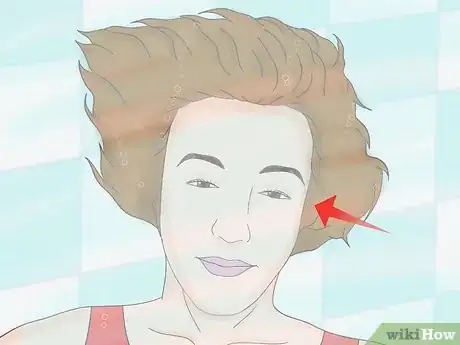
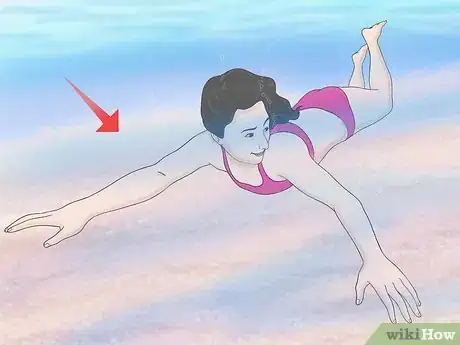
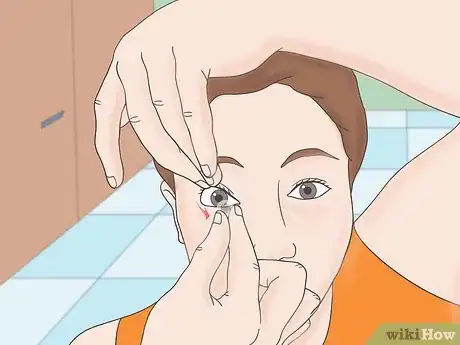
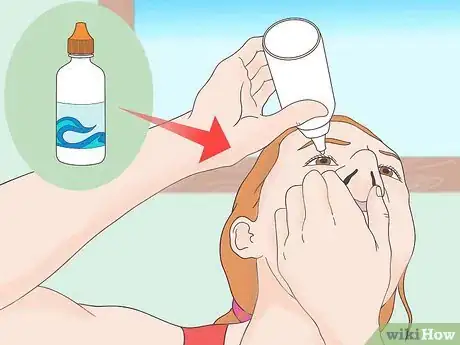
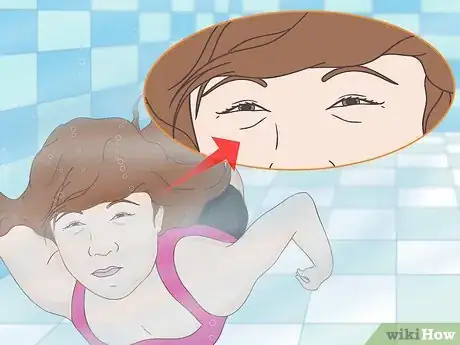
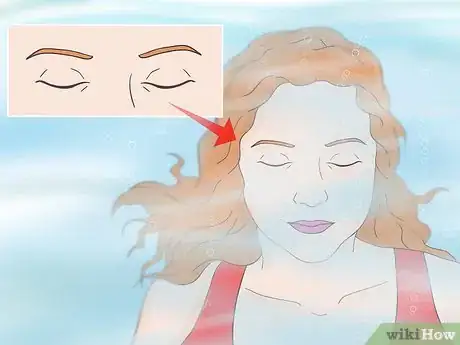
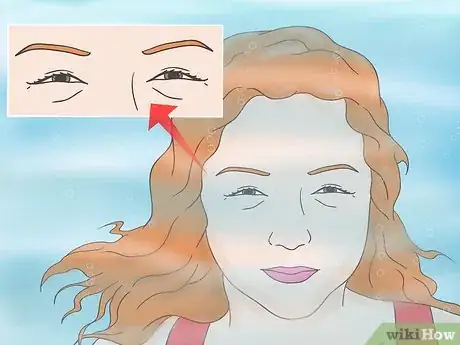
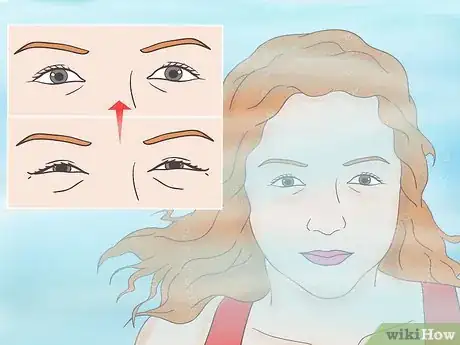
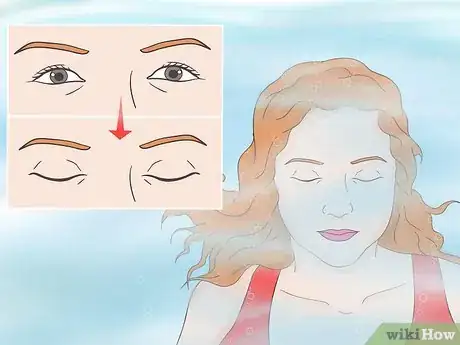
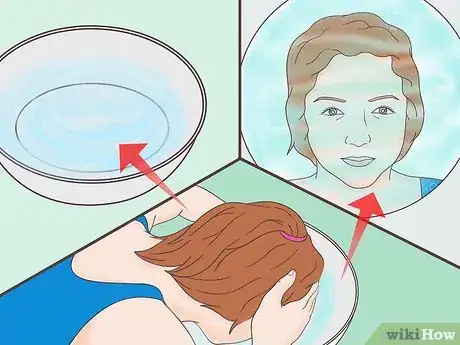





























































Medical Disclaimer
The content of this article is not intended to be a substitute for professional medical advice, examination, diagnosis, or treatment. You should always contact your doctor or other qualified healthcare professional before starting, changing, or stopping any kind of health treatment.
Read More...